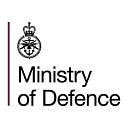COVID Support Force: The story so far
In case you missed it, the UK Armed Forces have recently created the COVID Support Force. Since then they have helped to build hospitals, drive ambulances, test patients and everything in between.
The UK Armed Forces have been on hand to support the national response to Coronavirus every step of the way. MACA (the Military Aid to Civil Authorities) has been as important as ever.
Here are ten key contributions the military has made to the fight against the virus: 👇
1. March 19th: the military start to help Britons returning from overseas. First stop: Cuba.
A charter flight carrying British and EU citizens from Havana, Cuba landed at MOD Boscombe Down in Wiltshire. The passengers in transit had been on the Braemar cruise ship belonging to Fred Olson Cruise Lines.
2. Mid-March: Joint Helicopter Command prepares to help
Ready to transport supplies, medical professionals and patients from rural areas or hospitals at a moment’s notice, the Joint Helicopter Command stood up an Aviation Task Force to support the Covid Response Force.
3. Mid-March: Soldiers begin to deliver PPE and supplies to hospitals
As part of the Military’s response to the Coronavirus outbreak, personnel have been delivering personal protection equipment (PPE) to all NHS hospitals, learning to drive oxygen tanks and also in the medevac of critically ill patients from remote communities
4. Mid-March: Wildcat, Chinook and Puma helicopters move to new stations in the UK so they can spread out to all areas — moving up to Moray in Scotland, and RAF Leeming in Yorkshire.
As part of an Aviation Task Force, three RAF Puma helicopters became stationed at Kinloss Barracks in Moray, Scotland, supporting the UK Government’s response to the coronavirus outbreak. The Pumas have been working closely with RAF Chinook and Army Wildcat helicopters based at RAF Leeming in North Yorkshire.
Southern England has been supported by Chinook helicopters from RAF Odiham and Army Air Corps Wildcat from RNAS Yeovilton.
5. End of March: Airborne Medics deploy to the Falklands to help the Coronavirus effort in our Overseas Territories
Airborne medics deployed to the Falkland Islands at short notice to reinforce the far-flung territory’s only hospital in the battle against coronavirus.
6. Beginning of April: the UK Government deploys medical assistance to its Overseas Territories, for example the Caribbean.
More than 4,000 miles away, the UK Government has an obligation to protect the safety and security of its Overseas Territories in the Caribbean
7. Mid-April: the UK Armed Forces learn to take swabs for Coronavirus testing, so they can test NHS workers and train others.
Edgbaston Cricket Ground has played host to some important international tests, but none more crucial than the tests that took place there on 5–6 April 2020. 40 British Army personnel spent two days learning how to perform tests for Coronavirus, to be used for NHS staff on the frontline.
8. Mid-April: Combat Medics deploy to NHS Hospital Harrogate
Combat medics were trained in using PPE before 145 logistics and medical support personnel were deployed to NHS Nightingale Harrogate.
9. Late April: Armed Forces support Mobile Testing Units for Coronavirus
Armed Forces personnel have been putting up Mobile Testing Units (MTU) to help essential workers and the most vulnerable to receive Coronavirus tests.
Frontline workers and the most vulnerable will receive increased access to coronavirus tests after a network of MTUs will travel to those who may be most vulnerable, including care homes, police stations, fire and rescue services and prisons.
10. Late April: Puma helicopter teams at Kinloss begin conducting training and duties in Scotland.
With Scotland’s diverse and challenging landscape, helicopters are an effective way to travel quickly across mountains and islands in medical emergencies. This is why the Aviation Taskforce is an essential part of the military’s support to Scottish health services.
